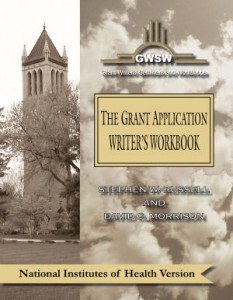It is most unfortunate that many grant applicants, particularly those who are relatively new to the ‘game’, envision the process of writing a grant proposal with the same mindset as writing a scholarly article for publication in a prestigious professional journal. At least part of the reason for this likely arises from the fact that, ingrained since the earliest days of graduate school, most future grant aspirants have been taught the critical importance to their future success of a strong publication record in quality peer-reviewed publications. Unfortunately, however, we find that many new applicants approach their first grant application with the framework that their previous manuscript writing training will apply directly to grant applications as well. Nothing could be further from the truth. In reality, the entire process of even thinking about writing a grant application is, in many respects, the complete opposite of what is required in a manuscript. In a manuscript, the objective is to present a scholarly summary of what has already been done, with arguments by the author to support the arguments for the validity of the conclusions reached. In contrast, the primary objective of a grant applicant is to convince a target funding agency, with persuasive arguments, that a body of work needs to be done and why the proposed methodologies would be valuable.
These key differences have been underscored in a scholarly publication by Robert Porter of Virginia Tech in an article entitled “Why academics have a hard time writing good grant applications” (The Journal of Research Administration, Volume XXXVIII, Number 2, 2007; p. 37). Dr. Porter summarizes a number of important distinctions that MUST be considered in writing a grant application that distinguish such writing from a scholarly manuscript. As summarized by Dr. Porter: “As competition intensifies for limited research dollars, proposal success rates for most agencies are declining. To be successful in this environment, proposals must be written in a strong, persuasive style, and academic writers accustomed to a different style need help to develop more effective writing habits.” We could not agree more. While there are many ways to acquire such skills, a really good place to start would be by carefully reading Dr. Porter’s article. A good second step would be to acquire our book, Writing for Biomedical Publication, and a version of The Grant Application Writer’s Workbook (NIH,NSF, USDA or Any Agency) where these key differences are emphasized.
While Dr. Porter’s article emphasizes about a dozen key differences in the two writing styles (manuscript vs. proposal), among the most important for the latter would certainly need to include “Scholarly pursuit vs. Sponsor goals” (in which the author/applicant would need to ensure that s/he would be fully aligned with the target agency’s, institute’s, or center’s goals); the use of a “Theme-centered vs. Project-centered” approach to the narrative (in which the author/applicant would need to have focused on a well-defined, well-planned, goal-oriented project); and the extensive use of “Expository vs. Persuasive rhetoric” (with the applicant/author committed, not to informing the reader, but rather to persuading the reader).
It should be apparent that such different writing styles demand a different mindset of the writer in order to be successful in either enterprise. As a final point, grant proposal applicants would be well-advised to remember the underlying motivation for readers, who decide to read published manuscripts because they WANT to, but are required to read grant proposals because they HAVE to. It is not difficult to see why these fundamental underlying motivational differences would dictate different approaches.

